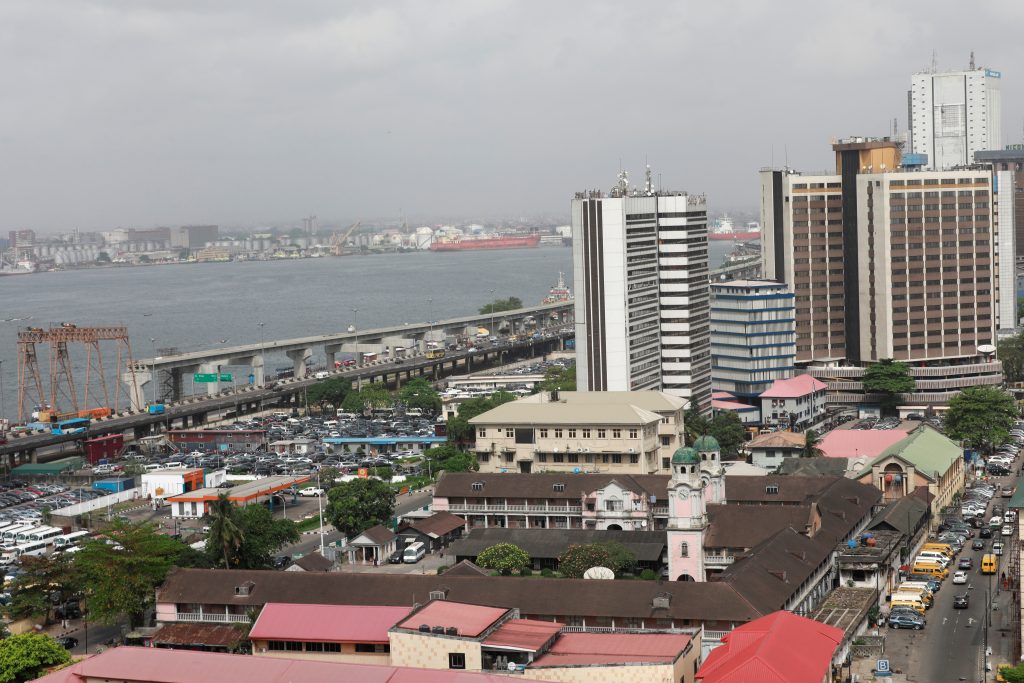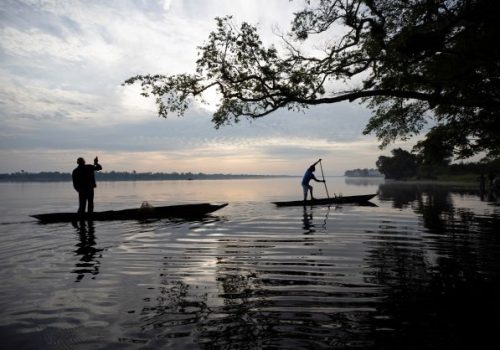Over the past ten years, investors in developed markets have been struggling with low returns: Yields maxed out between 4 percent and 5 percent. Today over ten trillion dollars sit in negative yield bonds, and private equity funds sit on nearly one trillion dollars in dry powder. With the rapid slowdown in European and US economies and fear of recession looming large, the situation is worsening. The war in Ukraine has made blatant what the COVID-19 crisis had already revealed—the world’s economic dependency on critical sectors and markets.
In the same way, institutional capital has remained concentrated in developed markets. Investors have sought to optimize for near-term returns rather than sustainable returns through diversification. The situation has resulted in unprecedented levels of liquidity: Global assets under management (AUM) have grown by more than 40 percent since 2015 and are expected to grow from over $110 trillion today to $145 trillion by 2025.
Investors looking for returns need to look to new markets. Africa—the most demographically dynamic region of the world—has been making headlines for the massive investment potential it offers, and yet has been stubbornly ignored. The continent’s average growth over the past two decades has oscillated between 4.5 percent and 5 percent, with five countries averaging over 6 percent. While the recession induced by COVID-19 hit wealthy countries of the Organisation for Economic Co-operation and Development hard with a 5.5 percent contraction in 2020, African countries were more resilient, only shrinking by 2 percent.
Despite the compelling economic data, the African growth story has not resulted in the concomitant boost in investment from global players. Investment into the region is made by the same long-time investors, including development finance institutions. Meanwhile, mainstream institutional investors remain on the sidelines.
Surveys have long documented the difference in risk perception between investors with established operations on the continent and those that are considering opportunities from afar. Those already invested in the region see Africa as the most attractive investment destination, while those that don’t have operations in African markets view it as the second-least attractive region. For funds and firms that have yet to enter African markets, a stubborn dichotomous view of African risk—one that oscillates between seeing the continent through a lens of foreign aid and another that embraces the high risk/high return view—creates confusion and causes hesitation. Furthermore, the mainstream investment strategy used by investors in developed markets—one that is data dependent and push-oriented—is ill-suited to the opportunities in African markets.
From data dependence to trend analysis
Developed markets are data rich. In North American or European economies, investing is governed by subsector experts who focus on niche industries and specialized asset classes. The accelerating financial complexity and sophistication of highly public markets in developed countries progressively made specialists critical to finding opportunities and delivering returns. The internet economy of the 2000s and the growing importance of real-time data has accelerated the specialization. Now, large data sets and artificial intelligence-powered analysis have become quantitative assets to specialist investors.
This was not always the case. Prior to the 1980s, top-level generalists who deeply understood political economy dynamics were successful investors. In the post-war era, international investors navigated domestic social change, reconstruction, decolonization, and oil shocks to build the continent’s first private equity firms and iconic multinational companies. Over the same period, the emerging computer revolution transformed economics from the study of human behavior in an environment of scarcity to a series of equations and advanced mathematical modelling. Economics as a science grew up alongside Masters of Business Administration (MBA) programs, resulting in a disconnect between economic and geopolitical analysis and an elevation of data in business decision-making.
In contrast to developed economies, African markets are defined by a lack of real-time, reliable data and strong interaction between political and economic realities, thus developed market analytical approaches will fall short. Cutting and pasting the data-dependent, specialist model in African markets leaves managers unable to understand and mitigate the operational, on-the-ground market risks. Country risk assessments, developed by economists at international financial institutions, tend to position geopolitical risk as a matter of insurance instead of being central to investment decision-making in projects and deals with medium-to-long-term returns horizons.
Taking a more intersectional perspective bringing together economic and geopolitical analysis requires an understanding of the trends currently reshaping the continent.
Most investors still operate on dated perceptions of African markets driven by oft-repeated factoids and the news cycle, failing to recognize the mutually reinforcing trends that have over the past twenty years restructured many African economies and enhanced their resilience. Coups grab headlines but day-to-day political stability makes for boring news. Despite the recent coups in Mali and Burkina Faso, the map of Africa is no longer a swath of autocratic regimes as it was in the 1980s but rather a mosaic with standout democracies such as Ghana and Senegal, which have—for the most part—been fortifying their institutions.
Regional powers such as Kenya and Nigeria, despite setbacks, have been on a trajectory of democratic progress. After the 2007 post-election violence in Kenya, the country reformed its electoral process and promulgated a new constitution in 2010 which devolved power. In Nigeria, the 2015 elections marked a turning point: the first time since the return of civilian rule in 1999 that an opposition party, the All Progressives Congress, won against the People’s Democratic Party that had ruled until then. In the 1990s, the Economist Intelligence Unit (EIU) only identified three democratic countries in Africa. In 2020, the EIU ranked twenty African countries as hybrid or higher on a democratic scale, despite democratic backsliding globally (including in the United States).
Accompanying the increasing political stabilization, economic diversification has also shored up African economic resilience. The continent’s sustained growth cannot only be attributed to high commodity prices but also is the result of a progressive shift away from raw material export models toward services and middle-class-based consumption.
The “oil curse” that colors the conversation of African economic growth is proving to be less powerful even in major oil exporters such as Nigeria. The oil price collapses of 2008 and 2014-16 revealed a previously unrecognized level of resilience on the continent. When oil hit a low of twenty-six dollars a barrel in 2016, regional gross domestic product fell to 2.2 percent from 3.4 percent the previous year, but the continent did not become mired in stagnation as it did in the “lost decades” of the 1980s and 1990s. Instead, growth recovered in 2017, revealing structural improvements (particularly in Nigeria).
Diversification has been supported by increased investments made in infrastructure, deepening regional integration culminating in the creation of the African Continental Free Trade Area in 2019, and greater amounts of disposable income that have supported domestic markets for consumption. African countries have had greater choice in international partners. Over the past two decades, China has become Africa’s most significant trading partner and the largest financier of infrastructure in the region to the tune of twenty-three billion dollars between 2007 and 2020. Over seven billion dollars of that financing went to telecom infrastructure. Increasing mobile penetration and digitization accelerated by COVID-19 are undergirding an exponential growth in venture capital into African markets. In 2016, total venture capital flowing into the region was just above $350 million. Five years later, it crested four billion dollars, with the lion’s share going to Nigeria, Egypt, South Africa, and Kenya, and with over 60 percent of the capital coming from US-tied entities.
The interaction of political stabilization, better macroeconomic management, technological change, and young demographics will support the continent in returning to growth after the COVID-19 crisis. Just like in the case of the 2016 oil shock, African growth bounced back to 3.7 percent in 2021, showing unanticipated resilience after the continent’s economy contracted by 1.7 in 2020. By analyzing the trends and accepting that rapid growth is neither linear nor smooth, investors can find success in African markets.
Pull over push strategies
Understanding transformative macro trends is sine qua non, but not enough to guarantee successful ventures. It is also critical to employ a pull strategy rather than a push approach. The latter focuses on creating new consumer needs and desires and then pushing relevant products into the market. The former instead rests on identifying unserved market needs and then creating products to meet that latent demand. Push strategies work well in consumption-based economies supported by efficient capital markets such as the United States or Europe in which affluent consumers can be convinced that their want of the newest mobile phone is actually a need. African markets are best-suited for pull strategies.
Most large European and US investors have a self-referential bias whereby they consider African opportunities through the lens of their own market operating environments. Many of them are looking to simply add a high-risk premium to compensate for investing in African markets on top of their familiar underlying asset structures. Some seek short-term, liquid, and safe assets such as treasury bonds while others pursue high internal rates of return (IRRs) in a seven-year fund lifecycle. Some are looking for real assets with developed secondary markets to ensure liquidity, while others want to deploy billions of dollars through thematic strategies such as infrastructure or climate.
Each “push” strategy will be exposed to difficulties that can create Goldilocks-type scenarios: not enough market depth, too few “bankable” projects, too much volatility, not enough liquidity, too much risk, inadequate profitability, and other such conditions. The list of reasons not to invest therefore becomes overwhelming and results in the accumulation of dry powder.
Fundamentally, African market realities are different—liquidity more often than not comes with volatility due to systemic local currency risk on the continent. The days of making 20 percent IRR in relatively safe private equity (PE) environments are also long gone: The first and second vintage in the early 2000s of African PE funds invested in banks, telecoms, and other low-hanging fruit, leaving only difficult operational, consumer-facing firms for today’s investors to build. Reports from both the International Finance Corporation and the African Private Equity and Venture Capital Association—better known as AVCA—show returns of less than 10 percent in African PE due to currency fluctuations. High returns can be found in the African early-stage venture space, but those opportunities are often too small for institutional investors.
To gain access to the tremendous opportunities that African markets offer at scale, emerging market investing must be built on pull strategies based on intersectional approaches, incorporating an understanding of existing demand and working to find overlaps between the realities of African markets and the requirements of investors. For example, the billions flowing into climate and environmental, social, and corporate governance (ESG) funds can deliver good returns, strong developmental impact, and advancement of United Nations sustainable development goals if investors think beyond immediate climate resilience within today’s economic context and recognize that African countries have a dual imperative–stimulating rapid green growth and alleviating poverty.
On a continent where six hundred million people lack reliable access to electricity, additional generation capacity is a critical priority on which the green or digital revolutions depend. While climate investors rightfully eschew investments in coal, natural gas generation opportunities may prove a good opportunity as they can create the base power necessary for broad-based solar. Likewise, attractive carbon reduction opportunities can be found in agribusiness, so having the flexibility to invest outside the energy sector increases the potential for success.
A flexible and intersectional approach can also help asset managers wanting to deploy billions of dollars in the short term. By recognizing that market absorption capacities will limit their deployment, they can invest smaller amounts in the nascent private debt industry, which will grow rapidly in the next three to five years given the continuously growing financing gap in African markets.
If large asset managers want the diversification and returns that these markets can offer, they must accept the intrinsic trade-offs found in emerging markets. If liquidity is the priority, an investor can buy bonds in Cairo, Lagos, or Johannesburg but must accept the concomitant volatility and depreciation risk resulting from the underlying assets being valued in local currencies.
If predictability and stability are desired, then an investor must prepare for illiquidity. While investing in illiquid assets in the real economy offers opportunities ranging from infrastructure to agribusiness to renewable energy, exits are difficult to time. The classic high risk, high return investment profile does exist but is now concentrated in the emerging tech and creative industries.
With recession looming on the horizon in the United States and Europe, investors who want to participate in the next wave of growth and create wealth from—and in—fast-growing emerging and frontier markets in Africa and beyond need to adjust their approaches to invest along transformational trends, navigate political economy concerns, and tap latent demand.
Twenty years ago, the Economist dubbed Africa “the Hopeless Continent.” Today, the associated risks with investing in Africa are very different. Risk perception must be updated to reflect the increasing resilience, digitization, and integration that now are taking hold in African markets. Investors will succeed if they work to understand market realities instead of coming with pre-defined investment strategies, if they find the overlap between their internal requirements and market needs, and if they embrace flexibility and intersectional approaches. The geopolitical and economic dynamics of this post-COVID-19 world make looking at African markets not a niche option but rather a mainstream necessity.
Guillaume Arditti is founder of Belvedere Africa Partners and a lecturer in international relations at the Political Sciences Institute of Paris (Sciences Po).
Aubrey Hruby is a co-founder of Tofino Capital, a senior fellow at the Atlantic Council’s Africa Center, and an adjunct professor at Georgetown University.
An abbreviated version of this article also appears on LSE Business Review.
Further reading
Tue, Sep 27, 2022
Here’s what a Marshall Plan for the DRC could look like
AfricaSource By Jean-Paul Mvogo
The development progress the DRC witnessed in the 1970s is now lost. A massive economic assistance program equivalent to the Marshall Plan may be necessary to recover what's been lost.
Mon, Nov 29, 2021
Africa’s digital infrastructure is the next playing field for great-power competition
AfricaSource By Aubrey Hruby
US-China competition will be shaped by efforts to support Africa's digital infrastructure.
Thu, Jun 16, 2022
Better data is the key to unlocking major investment in Africa
AfricaSource By Tom Koch
As COVID-19 and the war in Ukraine continue to hurt the African continent, many countries will require significant investment to revitalize their economies. But a persistent attribute of many African markets will continue to be a barrier to private investment: a relative lack of data. This drives up diligence costs, creates difficulties in valuing assets, […]
Image: A view of the central business district is seen from a roof top in Lagos, Nigeria March 16, 2020. REUTERS/Temilade Adelaja



